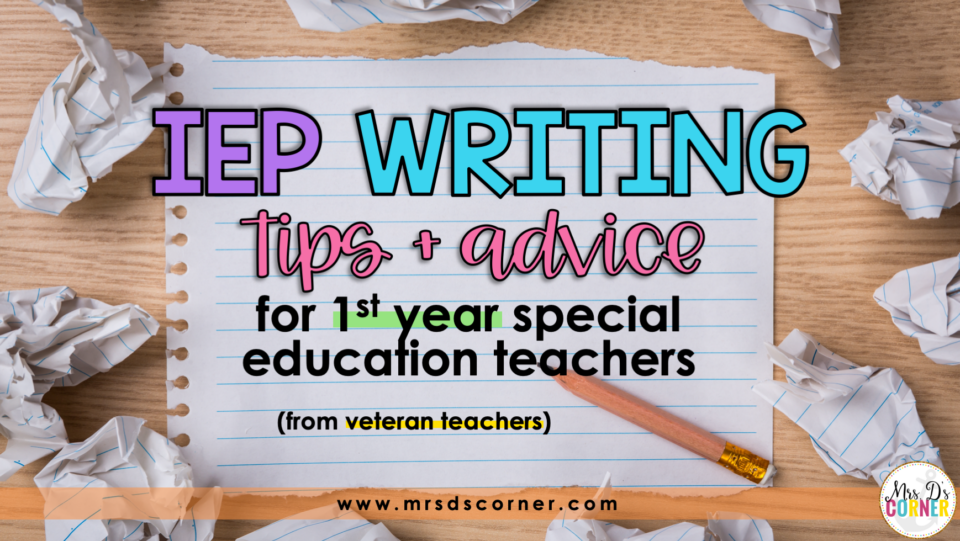Writing an IEP is one of the most crucial aspects of being a special education teacher. Writing the IEP will map out the main goals you want your students to work on over the course of a year, how they will participate in their day-to-day routine in school, and how you will measure the progress of these goals.


But if there’s one thing I’ve been taught, it’s that there is not much instruction on HOW to write these IEPs to fidelity. I figured the best way to understand how to write a good IEP is from the masters themselves, the veteran teachers. So let’s look at some of the tips and tricks I got when talking to veteran teachers.
IEP Writing Tips for First Year Special Education Teachers
The first thing I want you to remember is that no two IEPs should look the same. An IEP is exactly what it says – an individualized education plan. The IEP you write should reflect that specific student, and that specific student only.
In order to determine what is needed to be worked on next, you need to know where the student is currently performing both academic and functionally. You need to start with the child’s present level of academic and functional performance in school, and how it is affecting their ability to access the general curriculum. This is where all of that data collection comes into play.
You need to be able to show where the student is, can they complete these skills independently and consistently. A good idea is to then look at the grade level standard, compare where that student is to the standard, and determine what would be a reasonable goal that the student can achieve over the course of the IEP, but that would also get the student one step closer to closing the gap towards reaching the grade level standards.
Then let’s write your annual goal. When you write an annual goal, remember that the goal should be SMART. S – Specific, M – Measurable, A – Attainable, R – Realistic/Relevant, T – Timely.
The easiest way to write an annual goal is by starting out with what you want your child to accomplish over the course of the IEP (which is generally a year), the percentage or number of trials that will be measured, and in what time period. For example: student will identify the 8 basic shapes with 90% accuracy, or in 4 out of 5 trials, by February 2023.
Once you have that annual goal created, it’s time to look at the objectives/benchmarks. How are you going to break down this goal into steps for the child? So let’s take our example up top about the shapes and break that down. We can say that the child will identify 3 of 8 shapes with 90% accuracy by a certain date, then jump to 6 shapes with 90% accuracy by a certain date, then your last benchmark would be the annual goal of identifying all 8 shapes.
Data should be collected when working on this goal 7-12 times a reporting period, so approximately 1 to 2 times a week to determine whether or not the student is making progress. Are they progressing at a rate to meet the benchmarks and annual goal? Great, keep on working! Is their progress not as successful as you would have hoped or imagined? That’s okay too, this will give you an idea of what you might need to adjust in your instruction of this skill in order for the student to be able to master this goal.
BONUS IEP ORGANIZATION TIP:
You can find a lot more free IEP trainings on our YouTube channel here, as well as the two free, 1-hour masterclasses at The Intentional IEP:
When in doubt, don’t forget to ask for help. Reach out to your teammates, friends, other teachers in your district, a department head, anyone that you know that has experience in writing an IEP.
You can also reach out to our team at The Intentional IEP or ask a question in our free VIP Facebook Group.
If you are a veteran teacher reading this, what is one piece of advice you give to first year teachers about writing their IEPs? Tell us in the comments below. Together we are better!





